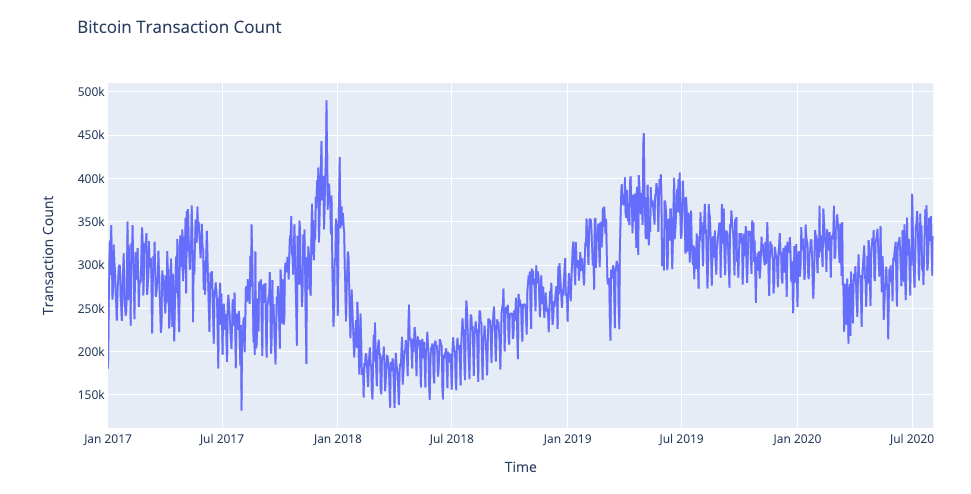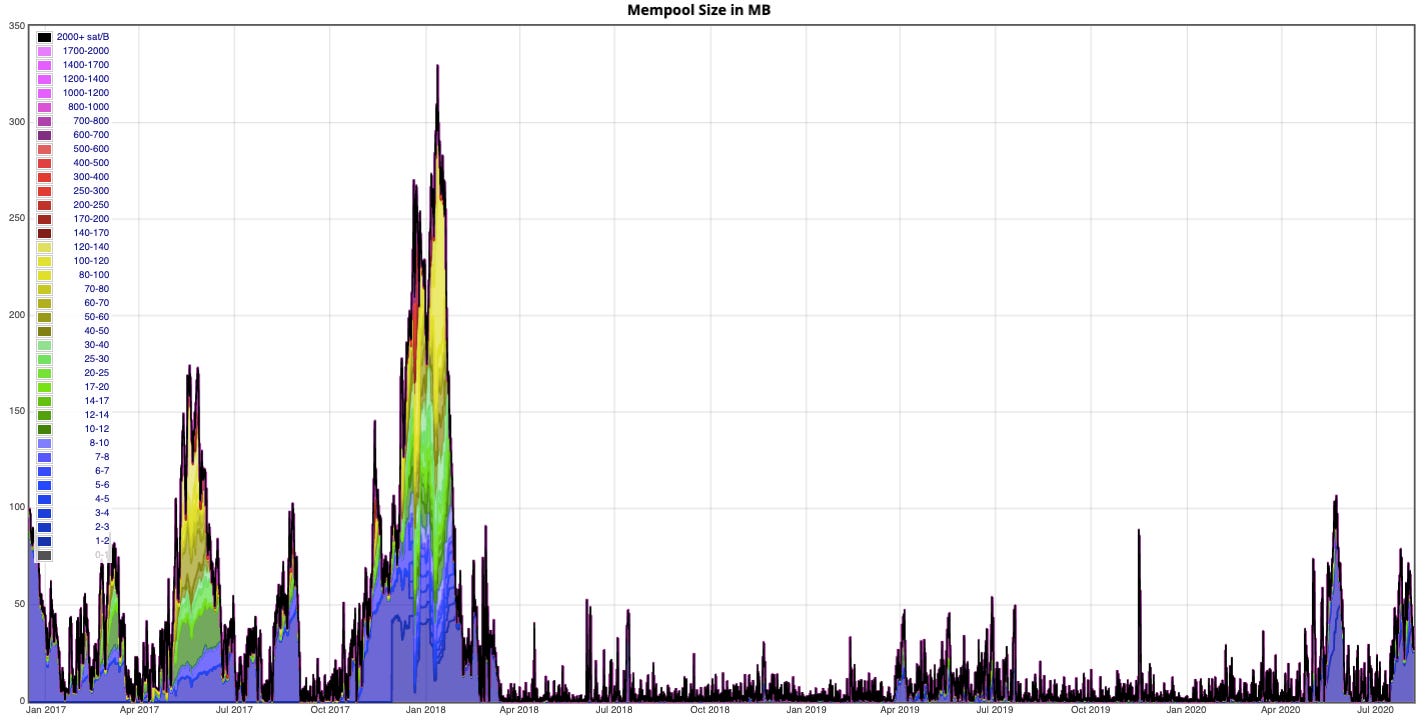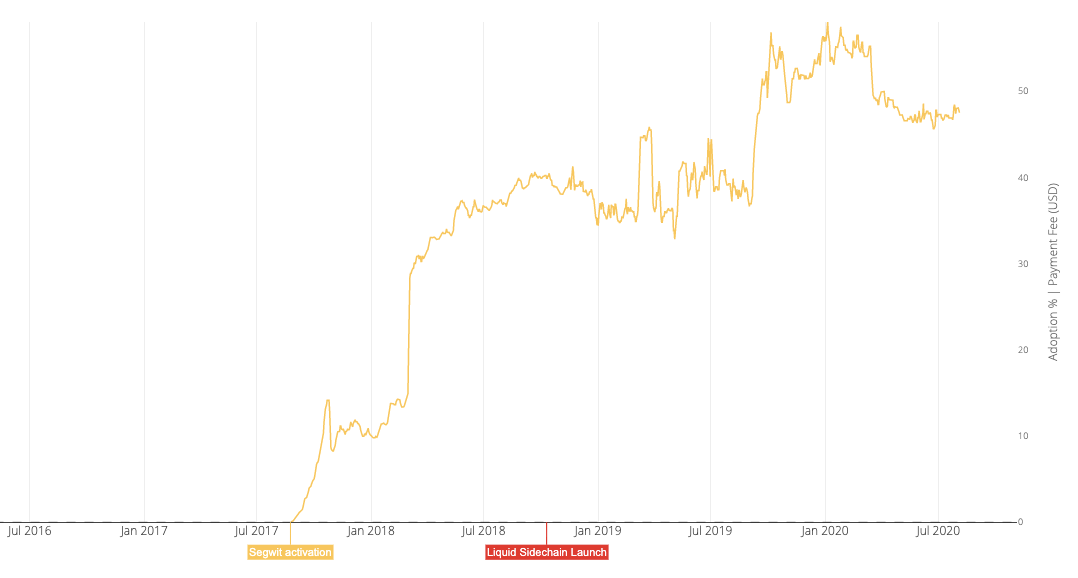Transaction fees have recently been higher for Bitcoin users. However, fee rates remain significantly lower than levels observed in 2017 despite a higher number of transactions taking place on the network in recent months.
We analyse the key factors behind the lower fee rates and highlight how users are making more efficient use of block space. We also detail developments in the Canaan board of directors, share the specifications of a new rig launched by MicroBT, and provide a brief update on Bitmain.
The HASHR8 podcast has an archive of over 100 episodes with the leading professionals in mining. The episodes have been informative, insightful, and have given an inside look into the minds of the leading miners.
However, there may have a new king of mining podcasts after the launch of Proof of News. Whit Gibbs and Ethan Vera will be hosting Proof of News weekly to shine a light on the most important developments in the mining world.
Bitcoin Transaction Fee Analysis
Anybody who was involved in crypto since 2017 will remember the extortionate run-up in Bitcoin fees towards the latter end of the year. Users began paying average fees of over $50 during several days in December 2017.
After recent price increases across the crypto market, fees have also been higher on the Bitcoin network. Higher prices and an increase in the number of transactions on the network are only two of the factors fuelling the rise.
But despite these factors, fee rates remain far below their 2017 peaks. In the latest Difficulty Adjustment release, we analyse why current fees are far below the levels observed in 2017 despite a higher volume of transactions being processed.
For several days in December 2017, the average daily fee paid by users was over $50. The average fee recently peaked on July 30th at just above $6. In other words, the average daily fee was 88% lower than the average daily fee paid during the fee peak of 2017. Unsurprisingly, the recent fee peak came just a few days after price recorded a daily 11% increase on July 27th. Such price increases spur speculator activity.
Movements to and from exchanges spike as a result with some holders transitioning funds to exchanges to take positions. Other holders may seek to take profits from altcoin positions in BTC and move funds to their own personal wallets.
Inflows to exchanges spiked on July 27th with the amount of BTC sent to exchanges doubling from the previous day. Exchange outflows also spiked. Such flows increase the amount of transaction activity which takes place on the network. However, transaction volume is just one factor which plays into the fees that users pay. Daily transaction volume in 2017 was not far greater than in recent months. Short-lived peaks in December were almost twice as great but far from the almost 10x premium that was being observed in transaction fees. Bitcoin price also plays a role given that higher prices will result in higher fees in USD terms. However, fees in BTC terms were also far higher in 2017.
A more important factor than both price and transaction count was how congested the network became. Each Bitcoin node keeps a version of a Bitcoin mempool which logs valid transactions that have yet to be confirmed. In December 2017, there was a major buildup in transactions which were waiting to be confirmed. Those users who needed to process urgent transactions on the Bitcoin blockchain were forced to pay a significant premium which hugely increased the revenue that miners earned from fees.
Increases in transactions waiting in the mempool in May and recent months have forced some Bitcoin users to pay higher fees if they wish to process transactions urgently. However, many users can still pay low-mid rate transaction fees if their payment is not a high priority. Any build-up in the mempool since Q4 2017 has been short-lived. Users sending non-urgent transactions are typically confident that a miner will pick up their transaction with a low fee rate when network congestion dies down. However, the same can’t be said for November 2017 to January 2018. During this time period, the network was constantly congested and those using low fee rates could not be confident that a transaction with a low fee rate would be processed even within months.
There are several interconnected reasons why the mempool does not congest in the same manner as it did in 2017. Higher SegWit activation, Lightning Network payments, and batching of transactions all contribute to lower demand for block space. SegWit was activated via a user-activated soft fork (UASF) on August 1st 2017. It increased the amount of data which could be included in blocks by segregating the part of the block which included the signature. This signature part of the block previously took significant space in each block and partitioning this part made it possible to include a greater amount of transaction data in each block.
During the mempool congestion of 2017, less than 10% of nodes had activated SegWit meaning that most blocks were still constrained by the non-SegWit capacity limitations. In recent months, close to 50% of nodes have activated SegWit. The activation of SegWit also made the Lightning Network possible. The Lightning Network is a layer 2 solution which allows economic activity to take place without base layer transactions being required. Since the launch of the Lightning Network, an increasing amount of economic activity has been taking place in Lightning Network channels which lessens the demand for transacting on the blockchain. Taproot is an upcoming development proposal which will further increase how efficiently block space can be used.
Furthermore, analysis by researcher Hasu has highlighted that Bitcoin users (primarily exchanges) were using the Bitcoin blockchain inefficiently in 2017. During that year, most exchanges were using independent transactions to send funds which resulted in higher fees. Alternatively, users can batch transactions together by sending funds to several addresses in the different outputs of a single transaction. Several major exchanges only began batching transactions in 2018 and after. Data shows that roughly 6% of transactions were batched in December 2017 whereas ~12% of transactions are currently batched. Batched transactions were as high as 34% during mid-2019.
After analyzing the data, it is clear that block space is being used more efficiently by Bitcoin users in recent years. Although transaction volume may be as high as previous periods of high activity, miners can fit more transaction data per block due to higher SegWit activation and users are using single transactions to send to multiple addresses. These have been the key factors that have kept transaction fees at a rate far lower than in 2017. The upcoming Taproot proposal will further increase how efficiently users can use block space.
What Miners are Monitoring
Canaan undergoes a significant change in corporate governance. Five members are departing from Canaan’s board of directors. Two of the departing members held responsibilities at the company while three were independent directors. Four new independent directors will join the board which will bring the total number of Canaan board members to six. Canaan’s share price has recorded strong price performance over the past month as investors price in the benefits of a higher Bitcoin price for mining firms. Canaan share price increased by 35% over the past month but has declined by 5% over the past day of trading. The recent decline may be reflecting that the significant change of directors could indicate potential problems at the firm.
MicroBT releases Whatsminer M32 rig. MicroBT announced a new mining rig in July. The Whatsminer M32 rig has an advertised hash rate of 66 TH/s and an energy efficiency of 54 J/TH. The energy efficiency is far above that of latest-gen models which are ~30 W/TH. However, with the rig priced ~$1,500, miners can make the tradeoff of spending less on CapEx but incurring a higher OpEx.
Bitmain June and July orders will be delayed until September to October at the earliest. Bitmain recently updated its customers about the delays. They will offer compensation in the form of coupons for delays of greater than ten days. Potential refunds may be processed for delays greater than 60 days.
About HASHR8
Mining is the misunderstood heartbeat of blockchain technology. It fuels multi-million dollar IPO’s and drives institutional investors to big datacenters; it’s infrastructure is the subject of speculation and skepticism. Our global reach helps us demystify and broadcast the thoughts of industry leaders, and keep research firms, investors, and consumers up-to-date on trends and insights.





